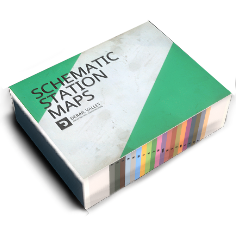Reverser/ja: Difference between revisions
Updating to match new version of source page |
No edit summary |
||
| Line 1: | Line 1: | ||
<languages /> | <languages /> | ||
< | 逆転機は{{pll|Rail Vehicle Types|動力車}}に搭載され、車両の進行方向を設定するために使用する制御装置です。<br/>通常は、車両の{{pll|Rail Vehicle Types|運転台}}にあるレバーで操作します。<br/>逆転機には、前進と後退に加え、中立の設定があり、これは{{pll|Rail Vehicle Types|駆動システム}}から完全に分離するものであり、{{pll|Mechanical Transmission|変速機}}のニュートラル設定に似ています。 | ||
</ | |||
<div lang="en" dir="ltr" class="mw-content-ltr"> | <div lang="en" dir="ltr" class="mw-content-ltr"> | ||
Revision as of 13:35, 17 June 2025
逆転機は動力車に搭載され、車両の進行方向を設定するために使用する制御装置です。
通常は、車両の運転台にあるレバーで操作します。
逆転機には、前進と後退に加え、中立の設定があり、これは駆動システムから完全に分離するものであり、変速機のニュートラル設定に似ています。
Vehicles equipped with a reverser can run both forward and backward with equal capacity, and are even equipped with lights on both ends for this purpose. Depending on the vehicle design, the only difference when changing orientation can be the driving visibility, and cooling behavior.
Reversers should never be operated when vehicles are in motion, to avoid catastrophic damage to the powertrain. For the same reason, to operate the reverser, throttle and dynamic brakes need to be disengaged.
On steam engines, cutoff is the closest feature to a reverser, albeit with more functionality.
Many vehicles only have one set of controls, facing a particular direction. To drive these vehicles in the opposite direction comfortably, it helps to use the universal control stand, or a locomotive remote controller, if supported.
